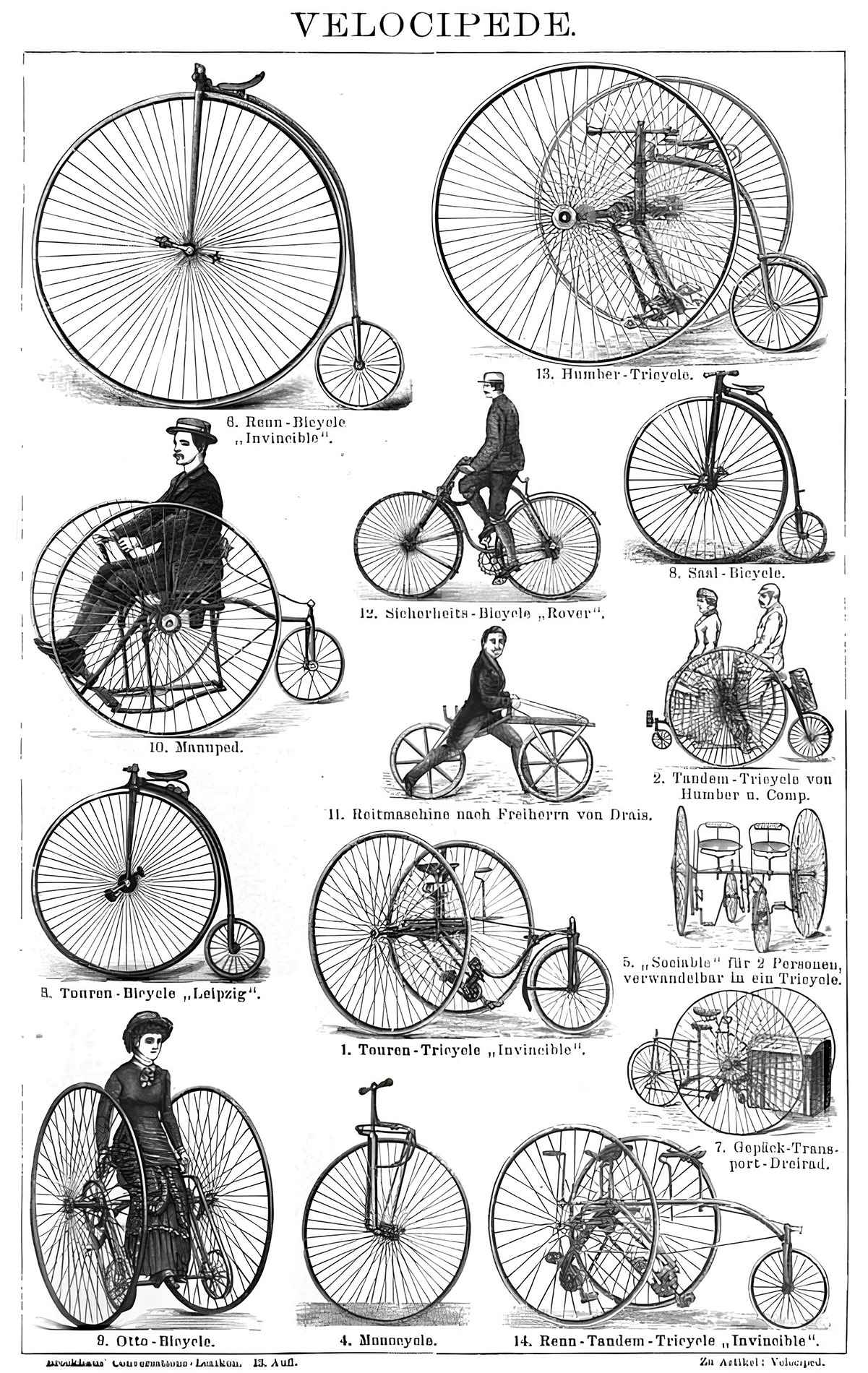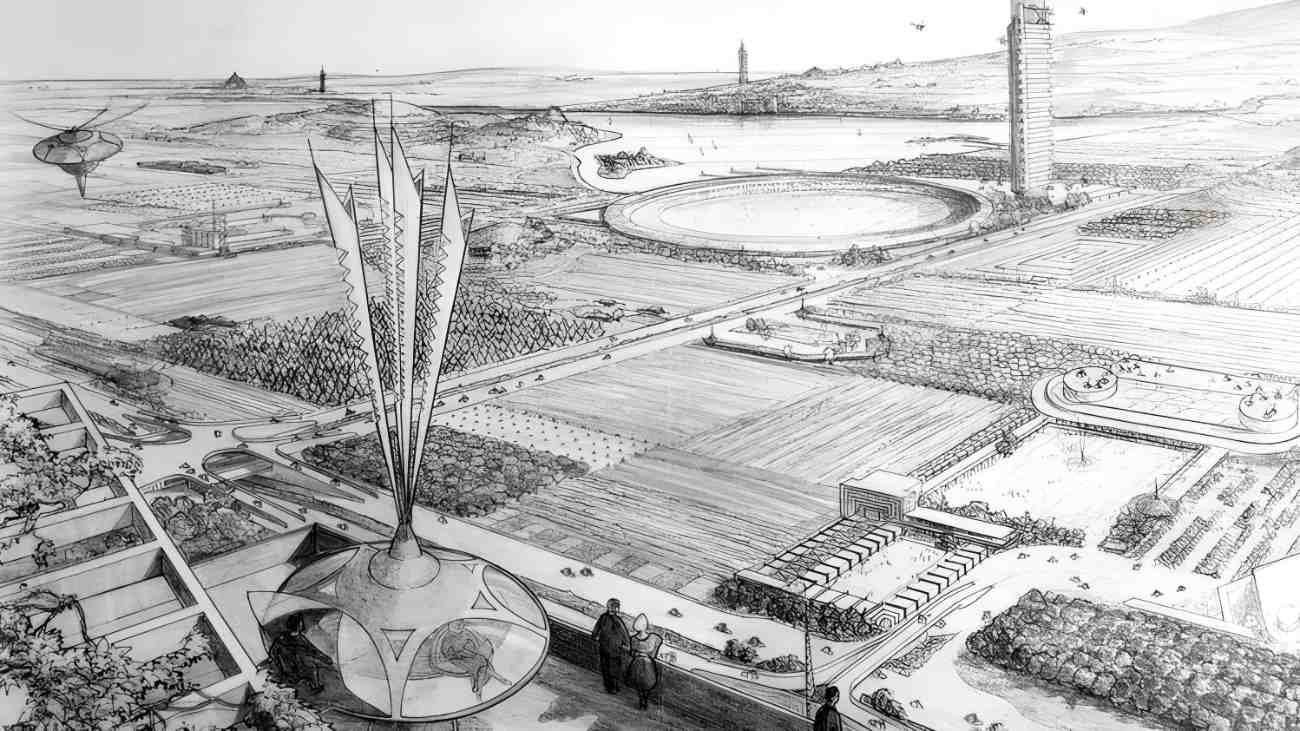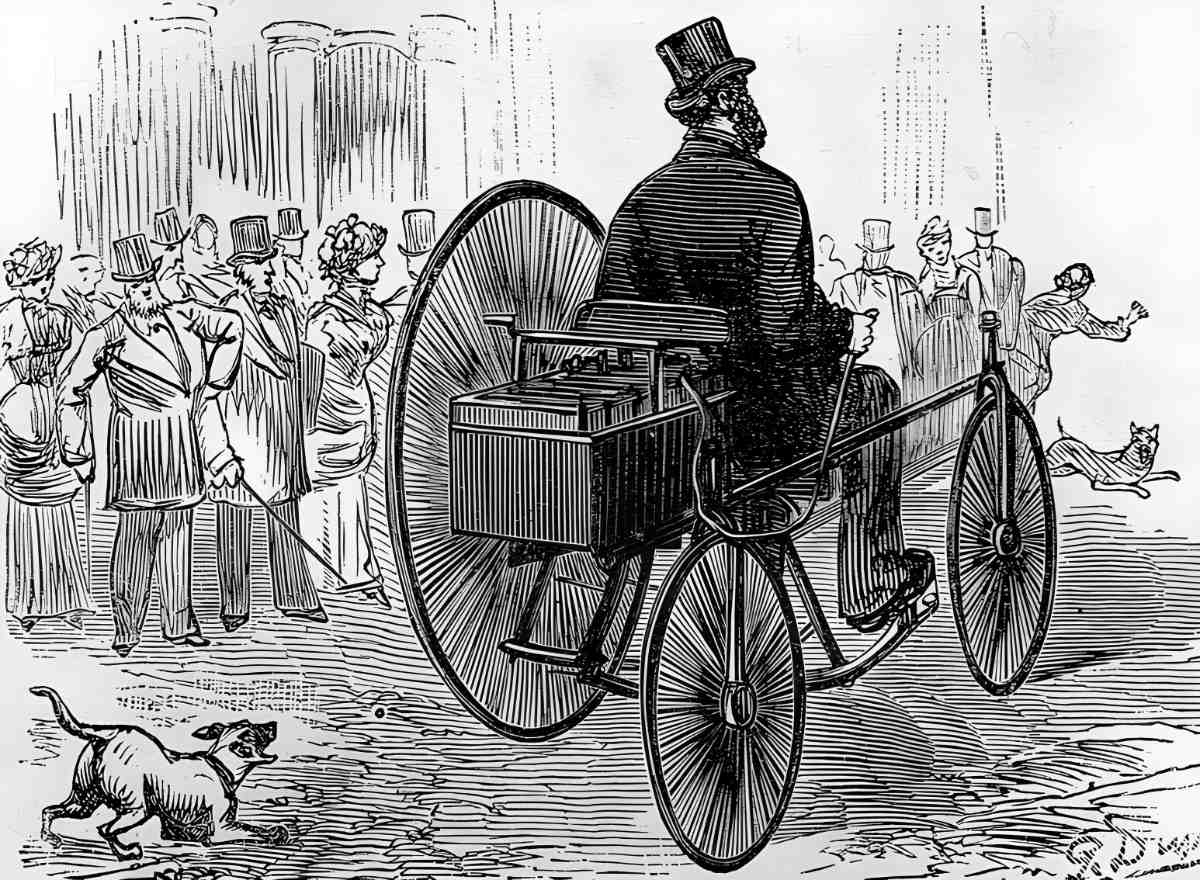It has been suggested that both Leonardo da Vinci and the “fabled” Count Mede de Sivrac, had roles in the development of the bicycle. Mede de Sivrac is said to have invented the first bicycle around 1790 which resembled a “draisine” (a bicycle without pedals). But it was in fact German nobleman Baron Karl Drais von Sauerbronn who actually invented the actual draisine 27 years later in 1817 and patented it in French (probable source of the Sivrac fiction). As a forest scientist, Karl Drais displayed a “seated running machine” made of two iron wheels connected by a crossbar and the movement of the feet on the ground in Luxembourg Gardens in Paris in 1817.
The invention of the first bicycle ushered in a new era of two-wheeled transportation, which was followed by the pedal velocipede (now called “bicycle“) and, more recently, the modern electric bicycle.
The first bicycle

In 1891, French writer Louis Baudry de Saunier, who specialized in terrestrial locomotion, spread the myth of the “celerifere” hoax.
As early as the late 18th century, people were using their feet to move crude two-wheeled vehicles. But it was German Baron Karl Drais who invented the first known bicycle in 1817 which he called it “laufmaschine” or “running machine” in English. It was also called draisine (from the inventor’s surname) in English and draisienne in French.
This first bicycle was mostly made of beam of wood on which the wheels were fastened. The operator sat on a cushion on the beam and used his feet to propel the machine. The front wheel of the vehicle could be rotated by turning the handlebars. It was later commonly known as “velocipede” or “swift foot” in Latin. It was the first commercially successful bicycle and a huge step forward in transportation.

Produced in Germany and France at first, numerous individuals referred to this first bicycle as a “hobby-horse” or “dandy horse“, especially the British, after its widespread popularity.
The origin of the idea
Crop failure in 1816 or the Year Without a Summer—the after effect of the 1815 Tambora eruption—led to the starving and death of many horses, which piqued Drais’s interest in finding a substitute to the horse.
Karl Drais traveled eight miles (13 kilometers) with his design on his first documented ride in 1817 from Mannheim. The draisine was almost all wooden, weighing 22 kilograms (48 pounds), featured brass bushings in the wheel bearings, iron shod wheels, and a rear-wheel brake.
Several thousand draisine were manufactured and put into service, mostly in North America and Western Europe. As local governments started to ban it, its popularity quickly declined, in part because of the rise in accidents.
The first pedal driven bicycle
After then, innovators from France, Germany, and Britain developed a plethora of advancements. In Britain, the “pedestrian curricle”, an earlier bicycle form, was known as the “dandy horse”. This curricle, invented in 1818, was a lightweight bicycle with a adjustable seat and armrest.
Drive levers and pedals were added to a draisine-type machine by Scottish inventor Kirkpatrick Macmillan first in 1839, making it the first bicycle with pedals. With these advancements, the driver could move the vehicle forward without using his feet. But it was actually based on an already known mechanism called a “treadle” which operated differently from the modern pedals.

An improved version of this machine, also invented by a Scotsman in 1846, was dubbed the dalzell and saw widespread usage in Britain.
Invention of the modern bicycle
French velocipedes, which used cranks and free pedals, were the direct ancestors of today’s bicycles. Around the year 1855, its popularity skyrocketed in France. Both the frame and the wheels were manufactured from wood. The tread, the forerunner of modern tires, was formed of iron, and the pedals were joined to the hub of the front wheel, the driving wheel, which was set at an angle relative to the rear wheel.
Because of the pain it causes while traveling over uneven pavement or cobblestones, the British dubbed this thing a “boneshaker.”

In 1869, a British inventor designed the first official “bicycle”, which included rubber tires mounted on steel rims. A contraption with most of the attributes of a contemporary bicycle was constructed in Britain by James Starley four years later under the name “grand bi.” In those days, Starley’s machine had a front wheel that was three times as huge as the one in the back.
Towards the success of the bicycle
The evolution of velocipedes continued after the 1870 war, particularly in England. The front wheel grew, while the back one shrank. When first introduced, this kind of bicycle took the world by storm.
Later, in 1885, for the latter, locksmith Pierre Michaux and his son Ernest installed the pedals in their present location and chained them to the bicycle’s back wheel. The popularity of rural mail couriers and, beginning in 1903, the cyclists who compete in the Tour de France, ensured the phenomenon’s continued growth.

There are still more bicycles in use than any other mode of transportation in the world today (1.5 billion). The automobile formerly eclipsed it, but today there is a renaissance of sorts in post-industrial nations.
Today, the average annual distance cycled by the Dutch and Danes is 600 miles (1,000 kilometers), whereas the average distance cycled by the French for comparison is just 60 miles (100 kilometers). The mountain bike is a relatively new style of bicycle that has lately attracted widespread popular attention.
Electric bicycles for the future

It’s no secret that the electric bicycle, or electrically assisted bicycle, has been a major success in recent years, bringing bicycling back into the mainstream and revitalizing the sport in urban areas. It wasn’t created recently; in fact, it has been around since the late 19th century. The wheels and/or pedals were already equipped with electric motors that were driven by batteries.
The longevity of the gasoline-powered motorbike was a major factor in the success of this new form of transportation, delaying the widespread adoption of electric bicycles. The latter would be further refined in the decades to come, but would fail to find widespread adoption in the marketplace.
Nowadays, with environmental concerns and the push for “soft” transportation, this kind of transportation is getting a second chance. The electric bicycle is popular among city dwellers since it reduces pollution and requires less effort. Even if the price stays quite high (between 500 and several thousand dollars), the product’s rising popularity should make it more affordable over time.






